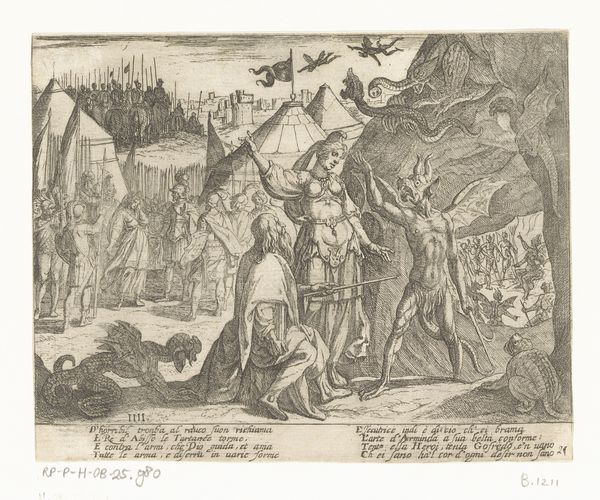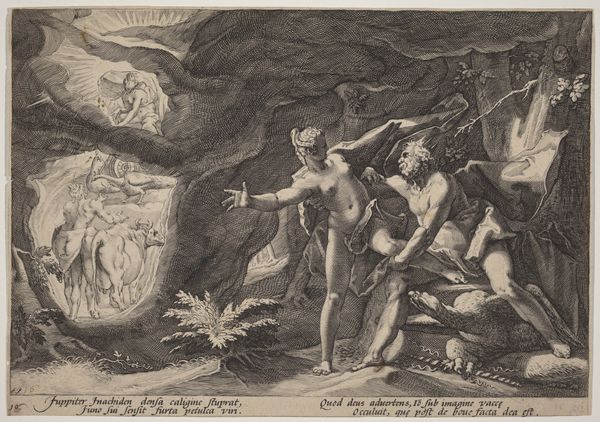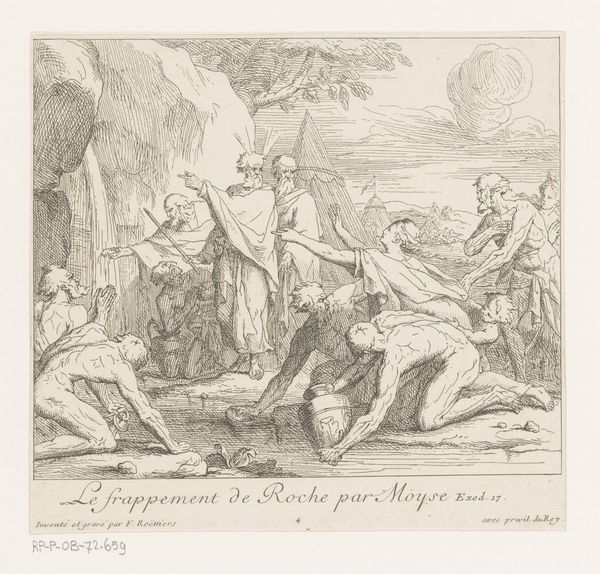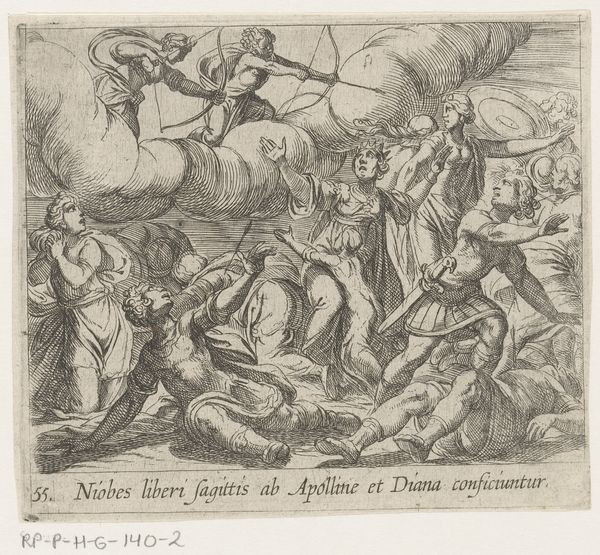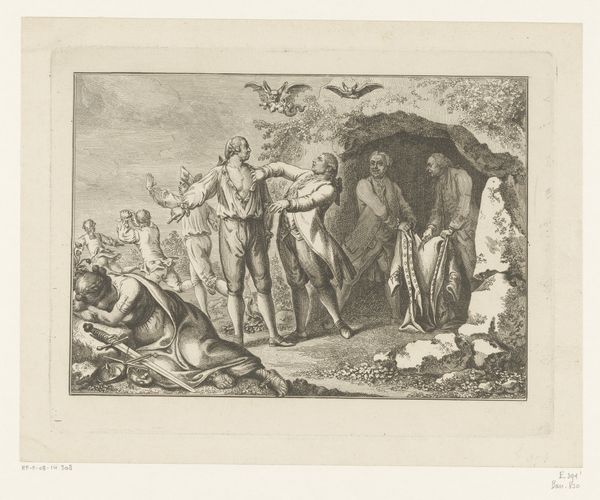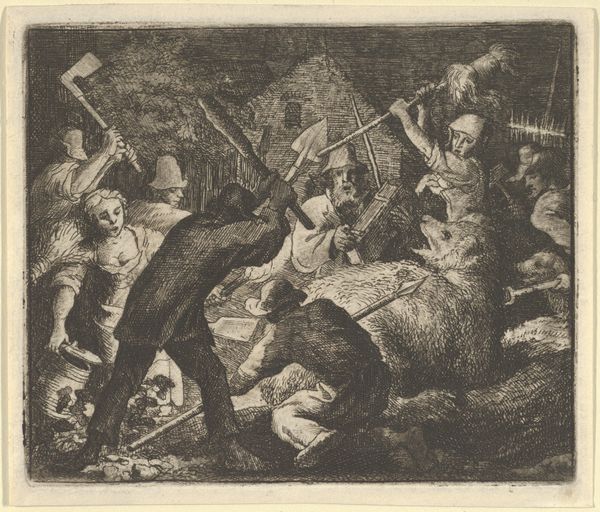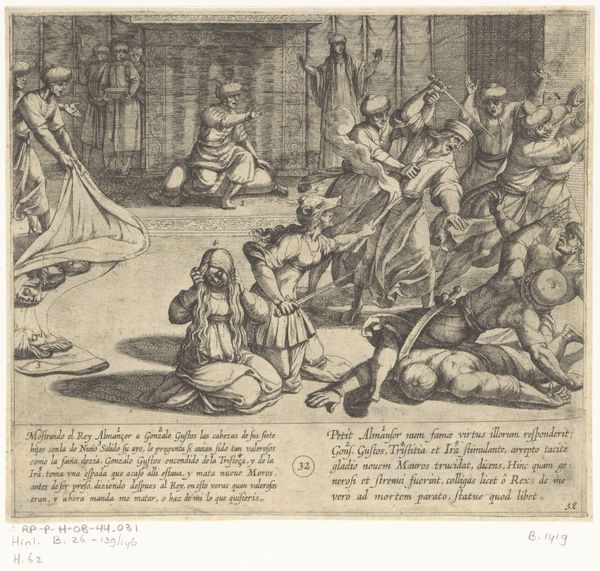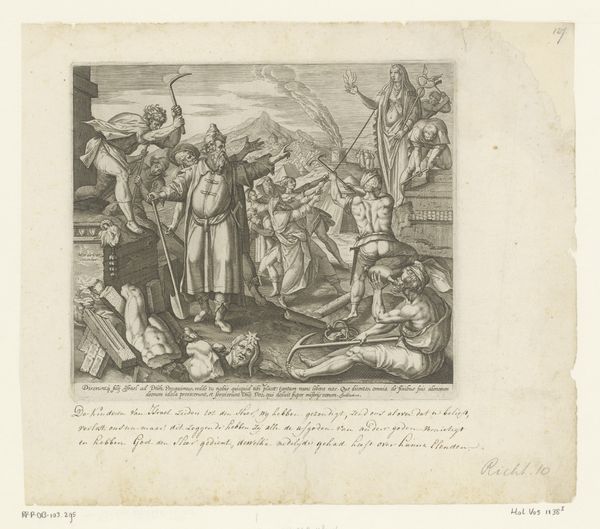
print, etching, engraving
#
narrative-art
#
baroque
# print
#
etching
#
figuration
#
mythology
#
genre-painting
#
history-painting
#
engraving
Dimensions: height 104 mm, width 117 mm
Copyright: Rijks Museum: Open Domain
Curator: Instantly, it feels like a descent, doesn’t it? Like peering into a particularly vivid and unpleasant dream. Editor: Indeed. We're looking at "Juno and the Furies at the Gate of Hades," an etching and engraving made around 1606 by Antonio Tempesta, now residing at the Rijksmuseum. Curator: Tempesta captures Juno entering Hades with such… reluctance, almost disgust. Her outstretched hand feels less like a greeting and more like she's trying to keep these figures at arm's length. Those Furies are truly horrific with snakes for hair—a visceral visual shorthand for torment. It plays so effectively on ingrained fears and the unknown. Editor: The Furies—Erinyes in Greek mythology—embodied vengeance. That classical memory is potently rendered here, isn't it? Juno’s presence throws their disruptive role into high relief. Even the three-headed Cerberus seems agitated, like a snarling gatekeeper unwilling to fully yield to Juno’s influence. Is this the intersection of divine order confronting primal chaos? Curator: Precisely. It's compelling how Tempesta uses the dense lines to evoke both texture and mood. Look at the contrast: Juno's flowing garments against the wiry chaos of the Furies and their grotto. Symbolically, it echoes the struggle between order and the unsettling realities residing in the subconscious depths. Juno stands in luminous dignity. What power could they both yield? What pact is made? I feel that in my bones. Editor: Power dynamics in mythological narratives! You get the sense that something wicked this way comes when considering Juno’s motives here. Tempesta provides a complex perspective on power, wrath, and divine agency. This moment freezes Juno at a fraught and uncertain apex, with long, dramatic consequences for generations. Curator: In exploring how he interprets those mythic figures, one starts to really think about who the real monsters are here, perhaps Juno herself and certainly about that moment when we allow anger to transform us. It's a cautionary visual tale that resonates even today, that dark side residing within us all, ever ready to stir. Editor: What stays with me is how the linear precision somehow heightens the surreal horror—a baroque nightmare rendered with astonishing clarity. Curator: And that lingering unease is a testament to Tempesta’s understanding of the deep symbolism at play, the universal fear and the timeless narratives that continue to haunt and intrigue.
Comments
No comments
Be the first to comment and join the conversation on the ultimate creative platform.

